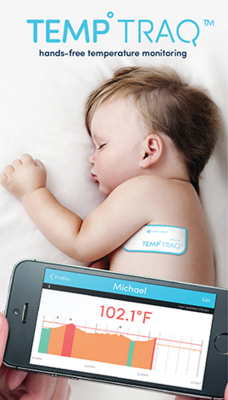
Flexible and printed electronics products in the healthcare and human performance monitoring sector will soon move beyond rigid, clunky wrist-wearing devices and into more non-intrusive form factors while increasing the information sent to monitoring systems and recommendations for actionable events. Key to the transition will be the development of a robust, repeatable and integrated manufacturing process for component integration.
Market forecaster, IDTechEx, is predicting a near $30B market for internet-connected devices in a combined industry and consumer sector. Of those, health monitors is the strongest segment, where performance is of the highest value and reliability is life-and-death critical. The savings to be realized from these devices and more successful self-treatment will make up for the shortages in doctors, nurses and care-givers as people live much longer lives and rely on near-constant stream of data and on their health.
Overcoming the challenges in designing and manufacturing more effective, non-intrusive health monitoring devices is dependent on organizations - and teams of organizations – which have a broad knowledge base a myriad of technologies and methodologies. Advanced materials and bio-sensor development, analysis tools and systems for managing and interpreting the data generated, microfluidics, flexible electronics (sensing, communications, power, processing, storage, analog to digital converters and interconnects) and large scale manufacturing – are all considerations in designing and manufacturing third or fourth generation devices for this market.
CHALLENGES FOR 3rd GENERATION BIOMETRIC MONITORS – a short list
- Advanced materials and composites
- BioMarker recognition tools
- Benchmarks and analysis tools
- Microfluidics
- Flexible, stretchable substrate
- Printing of conductive inks
- Programmable IC chips
- Integration of ICs chips
- Flexible & stretchable Interconnects
- Functional MEM structures
- Test and reliability standards and benchmarks
- Communication systems
- Flexible power sources and power management
- Volume manufacturing methods
Devices for the market will have tiny, functional structures built with advanced composites that do not interact or change the sample while processing, or be forced into a change by external forces such as magnetic fields, vibration, immersion or temperature variation. They will enable correlation between expected outcomes and anomalies and understand what might be an actionable data and which to disregard. Indices need to be created for the different characteristics of different body types and conditions. Stringent testing and analysis will play a role in bringing products to the market that the healthcare professional can trust.
Next page
The intelligence on small, flexible silicon can be incorporated onto flexible substrates for more conformable electronics and serve to eliminate big, bulky, boxy electronics that are far from comfortably worn. Products will incorporate a hybrid approach where commercial-off-the-shelf signal processing electronics are integrated onto the flexible substrate allows for the fabrication of fully functional, mechanically flexible, sensor systems.

Fig. 1: Patches which measure key health indicators are rapidly advancing the knowledge of materials and manufacturability and make up the 2nd generation of biomonitors transforming medicine and health performance. (Courtesy Blue Spark Technologies)
Many products have been conceived of in the laboratory setting, but pulling the skillsets together to bring it to the market are beyond the scope of any one company or organization. Building teams to tackle these projects has been the mission of the Nano-Bio Manufacturing Consortium (NBMC), FlexTech Alliance and the newest industry collaboration group, NextFlex.
Demand is high for increasing the manufacturability of all of these products while lowering the per unit price and increasing value to the customer. Of note, this is the reason the US government is putting its muscle (and funds) into advanced manufacturing of FHE with NextFlex.
NextFlex was announced last August, and has since released its first project call asking for proposals on advanced manufacturing methodologies for health monitoring and structural health monitoring. Over 70 organizations submitted pre-proposals to NextFlex with a wide range of projects designed to advance FHE manufacturing know-how. Much of the work was presented at the NextFlex/FlexTech event – designed to survey recent developments in printed electronics and how organizations are developing cost effective solutions for manufacturing advanced products and systems.
Specific development programs will be discussed on how and when FHE can and should be used in a variety of commercial and military applications. The event technical conference will also feature many presentations on the current state of FHE from a manufacturing perspective, including methods for integrating electronics with sensors onto flexible substrates.
To read more about 2016FLEX CLICK HERE.
About the Author
Heidi Hoffman is the Senior Director of FlexTech. She has been involved in bringing unique ideas, companies, and government together for over 25 years. She can be reached at [email protected] or at +1-408-943-6900.
Related Stories
Five Challenges of Optical Heart Rate Monitoring
I'll Bet You Can't Design This: A Human Sensation Transferal Using Sensors